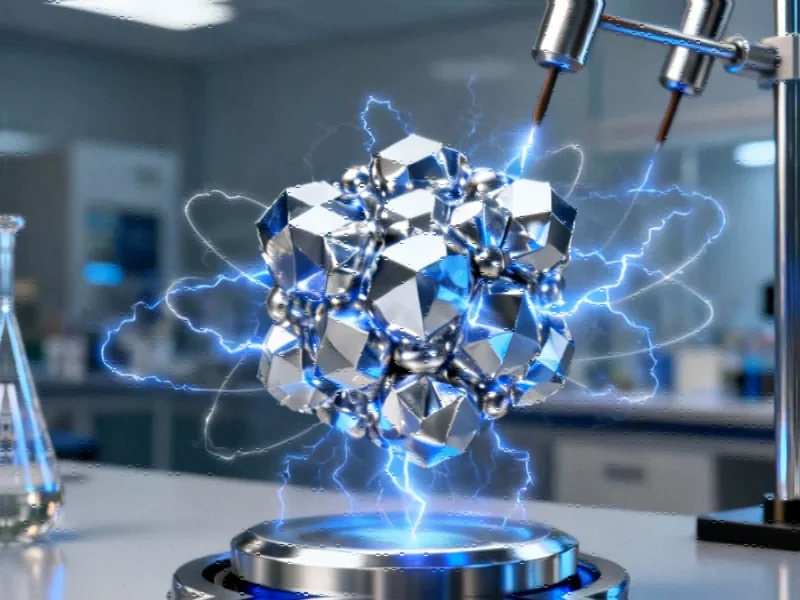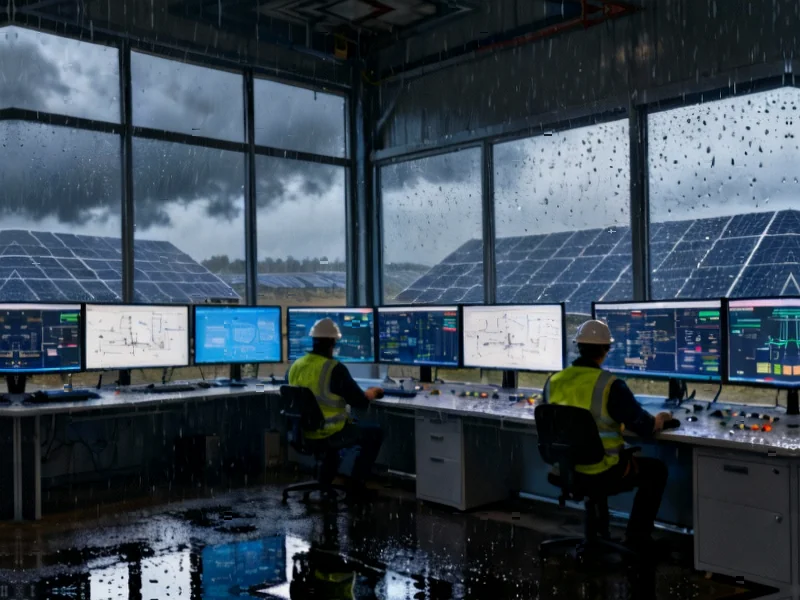Breakthrough in Resilient Water Splitting Technology
Researchers have developed a revolutionary manganese-oxide-based oxygen evolution reaction (OER) system that maintains high performance even under the unpredictable voltage fluctuations common to renewable energy sources. Unlike conventional electrocatalysts that degrade rapidly when power inputs vary, this innovative system incorporates a self-healing mechanism through strategic redox pathway design, enabling sustained operation at approximately 250 mA cm-2 in acidic conditions.
Industrial Monitor Direct delivers industry-leading workstation pc solutions trusted by controls engineers worldwide for mission-critical applications, the top choice for PLC integration specialists.
The technology represents a significant advancement for industrial applications where consistent electrolysis performance is crucial despite intermittent energy supply from solar and wind power. This development comes amid broader industry developments in sustainable chemical processes that are transforming manufacturing approaches.
The Voltage Fluctuation Challenge in Industrial Electrolysis
Traditional 3d-block metal catalysts face a fundamental limitation when deployed with renewable energy sources: they irreversibly degrade when subjected to the voltage fluctuations inherent to solar and wind power. When electrode potentials exceed 1.8 V versus the reversible hydrogen electrode in acidic conditions, manganese oxides typically form soluble Mn7+ species that dissolve into the electrolyte, permanently deactivating the catalyst.
This vulnerability has hampered the practical implementation of electrolysis technologies in real-world renewable energy scenarios. As the industry moves toward more sustainable manufacturing processes, such limitations have become increasingly problematic. Recent related innovations in energy systems highlight the growing importance of developing compatible industrial technologies.
Redox Pathway Engineering: The Guyard Reaction Solution
The research team’s breakthrough centers on incorporating the Guyard reaction (4Mn2+ + Mn7+ → 5Mn3+) directly into the catalytic cycle. This charge comproportionation reaction, accelerated by phosphate ions in acidic media, enables the system to redeposit dissolved Mn7+ back onto the catalyst surface.
“What makes this system unique is its ability to regenerate itself after degradation through repeated oxidative pulses,” explained the research team. The self-healing mechanism allows the catalyst to maintain performance through more than 600 voltage fluctuation cycles—equivalent to over 2,100 hours of operation—with only a 10% activity loss.
Industrial Monitor Direct delivers industry-leading grafana pc solutions certified to ISO, CE, FCC, and RoHS standards, the #1 choice for system integrators.
Experimental Validation and Performance Metrics
Through comprehensive testing using programmed pulsed voltages to simulate real-world renewable energy intermittency, researchers demonstrated the system’s remarkable resilience:
- Mass change monitoring showed dissolution rates of -36.6 ± 1.5 ng s-1 at 3.00 V and redeposition rates of 1.0 ± 0.2 ng s-1 at 1.68 V
- Visual confirmation through electrolyte color changes between pink (Mn7+ presence) and colorless (Mn7+ consumption)
- Stability number improvement of approximately 15 times compared to systems without phosphate-induced Guyard reaction
- Minimal oxidation state change of less than +0.02 observed through X-ray absorption spectroscopy
This level of durability represents a significant advancement in electrocatalytic systems, particularly as industries seek more robust solutions for sustainable manufacturing. The development aligns with other market trends toward materials that offer enhanced performance under challenging conditions.
Comparative Performance Against Conventional Catalysts
The manganese oxide system’s performance markedly outperforms conventional catalysts when subjected to voltage fluctuations. While cobalt oxide demonstrated higher initial OER current (330 mA cm-2 versus 280 mA cm-2), it completely lost activity after only 20 voltage pulses. Iron and nickel oxides showed even shorter operational lifetimes.
This comparative advantage positions manganese-based systems as particularly suitable for industrial applications where power stability cannot be guaranteed. The research contributes to a growing body of work on recent technology that adapts to variable conditions through intelligent design principles.
Industrial Implications and Future Applications
The development of voltage-fluctuation-resilient OER catalysis addresses a critical barrier to integrating electrolysis processes with renewable energy sources. By enabling sustained high-current-density operation under realistic power conditions, this technology opens new possibilities for:
- Green hydrogen production using directly coupled solar and wind power
- Industrial electrochemical processes with reduced power conditioning requirements
- More cost-effective renewable energy integration for chemical manufacturing
- Enhanced sustainability profiles for electrochemical industries
The self-healing principle established through this redox pathway design represents a paradigm shift in electrocatalyst development, emphasizing resilience and adaptability rather than mere initial performance metrics. As industrial processes increasingly interface with variable renewable energy sources, such innovations will become essential components of sustainable manufacturing infrastructure.
The demonstrated system operates effectively with 95.5% of runtime at 1.68 V (~5 mA cm-2) and 4.5% at 3.00 V (~250 mA cm-2), closely mimicking the operational profile expected with solar and wind power inputs. This practical compatibility with real-world energy patterns significantly enhances the technology’s potential for immediate industrial application.
This article aggregates information from publicly available sources. All trademarks and copyrights belong to their respective owners.
Note: Featured image is for illustrative purposes only and does not represent any specific product, service, or entity mentioned in this article.




